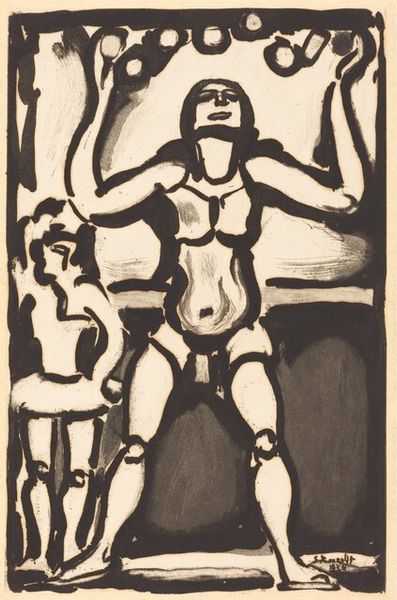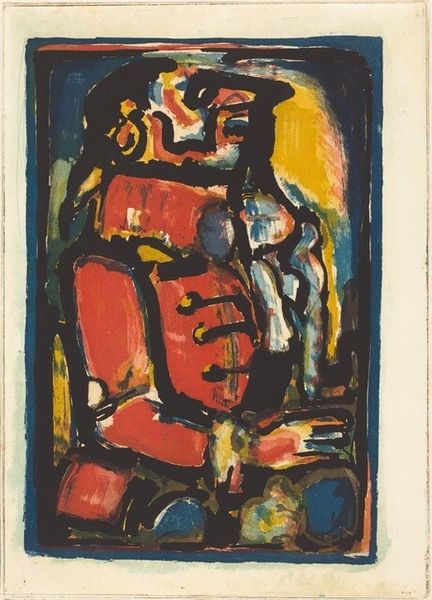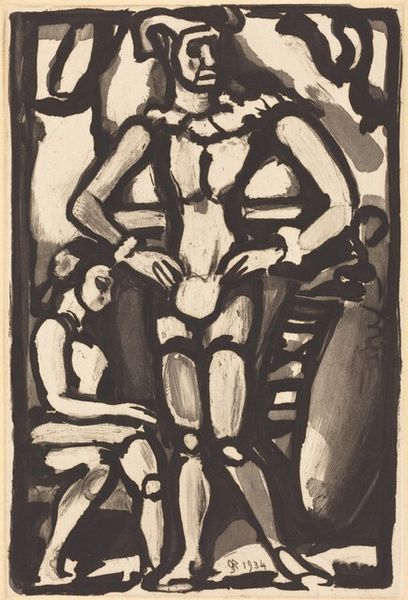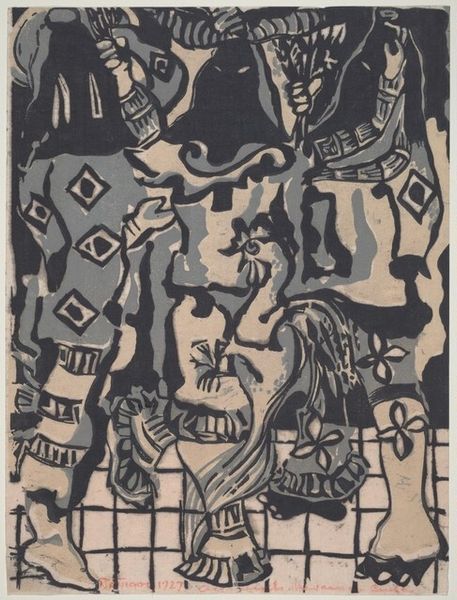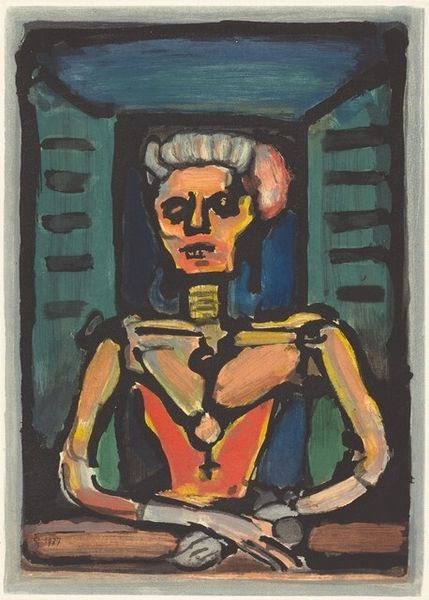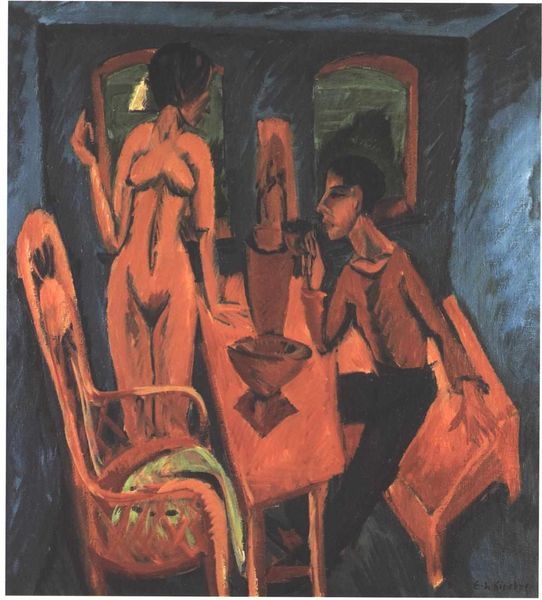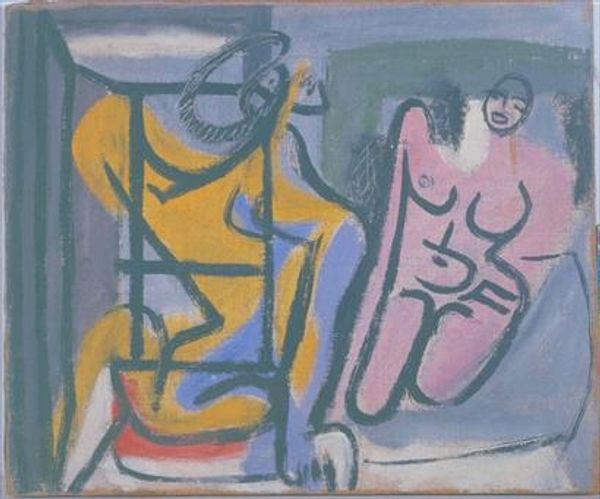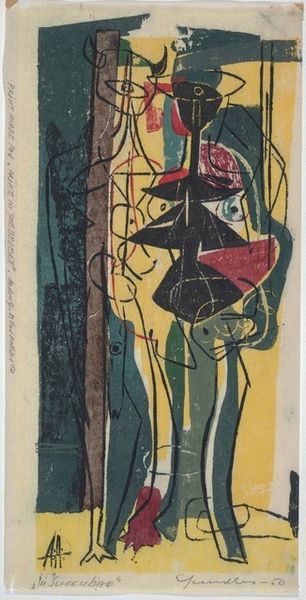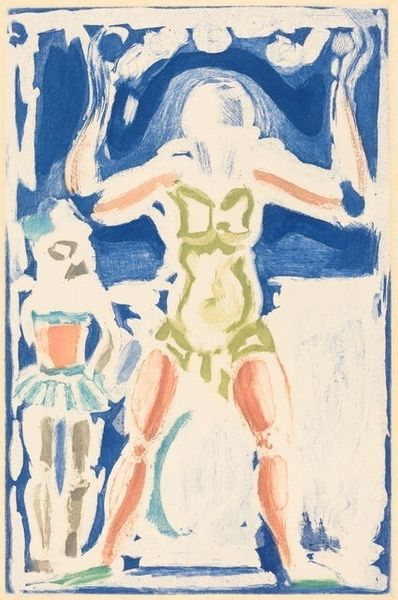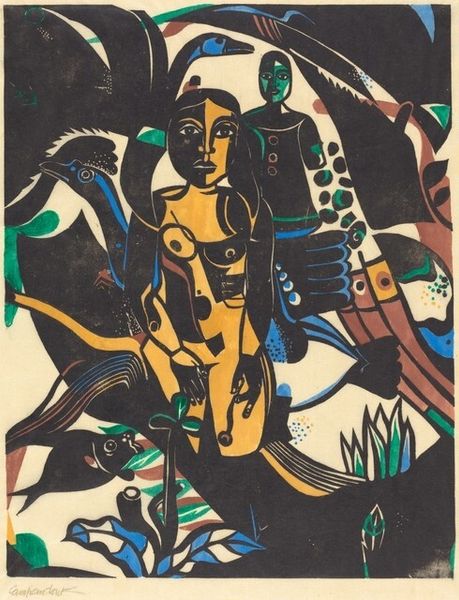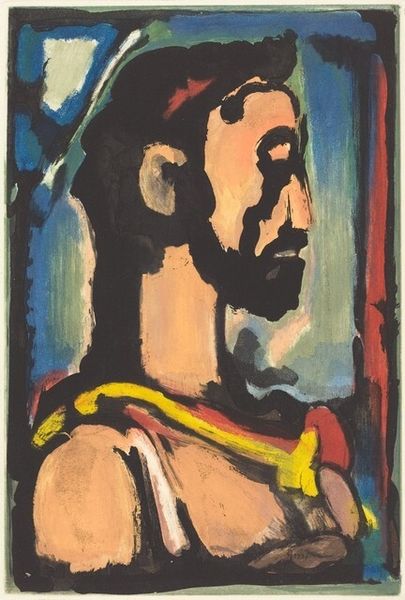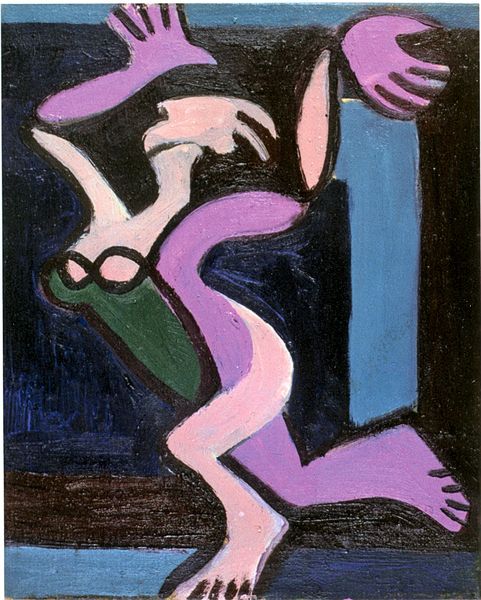
Copyright: National Gallery of Art: CC0 1.0
Editor: Here we have "Jongleur," a print by Georges Rouault, possibly from 1934. The crude forms and bold colors give it such a striking presence. The central figure dominates the space, and the woman to his side provides a stark contrast. What can you tell me about this piece? Curator: Notice first the emphatic black outlines that delineate each form, trapping areas of unmodulated color. The palette is high-key, employing jarring juxtapositions of yellow, blue, and salmon. Do these formal elements suggest anything to you about the artist's intention? Editor: I'm not sure... the strong lines and colors give it this directness and sense of honesty. The texture in the background, along with the rough outline around the dark shadows surrounding the characters makes it seem like it wasn't reworked much. Is that correct? Curator: Exactly. Observe how Rouault eschews traditional modeling, using blocks of color to define volume, which flattens the picture plane and directs the eye toward the surface itself. This emphasizes the artwork's status as an object. Consider also the asymmetry. How do these choices impact the overall composition? Editor: Well, the main figure seems very confrontational. Is it too much of a leap to relate his work to other social and political commentaries? Curator: Perhaps, but consider how the simplification of forms flattens emotional complexity, replacing it with an overt display of pure shape and color. Are these colors balanced? Editor: I guess not… the artist plays with balance instead of aiming for traditional symmetry, creating dynamism and, perhaps, disharmony? I learned a lot looking beyond the subject matter and focusing on Rouault's technique and choices. Curator: Precisely, a focus on the formal aspects helps to isolate the artist's means of production. It's been enlightening.
Comments
No comments
Be the first to comment and join the conversation on the ultimate creative platform.
